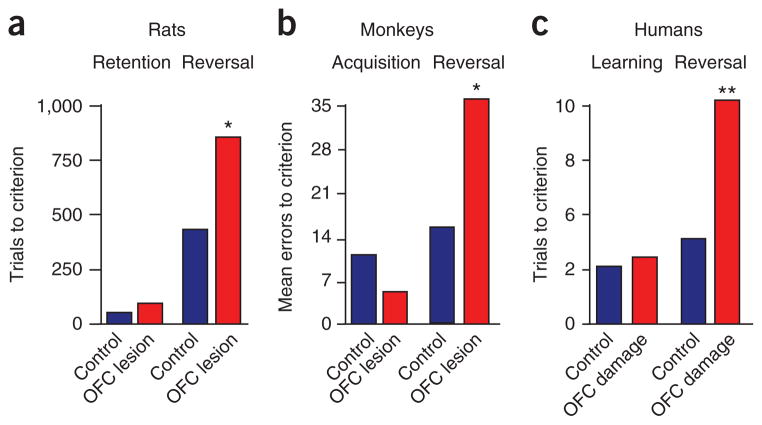Figure 2.
The role of orbitofrontal cortex in reversal learning. (a) Rats were trained to sample odors at a central port and then respond at a nearby fluid well. In each odor problem, one odor predicted sucrose and a second quinine. Rats had to learn to respond for sucrose and to inhibit responding to avoid quinine, and then the odor-outcome associations were reversed. Shown is the number of trials required by controls and OFC-lesioned rats to meet a 90% performance criterion. OFC lesions have intact retention of a previously learned discrimination, but impaired reversal learning. (b) Group mean errors to criterion for initial learning and nine serial reversals in object reversal learning in monkeys with bilateral OFC lesions. OFC-lesioned monkeys are specifically impaired in reversal learning. (c) Initial stimulus-reinforcer association learning and reversal learning performance in subjects with damage to the ventromedial prefrontal region and in controls. Initial learning and reversal performance is expressed as trials before the learning criterion is met. Subjects with lesions make more than twice as many errors as healthy controls in the reversal phase of the task. *P < 0.05; **P < 0.01. Adapted from refs. 22,95,96.

